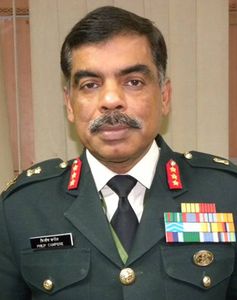The surprise Chinese intrusions across the Line of Actual Control (LAC) in eastern Ladakh in April-May 2020 were a brazen attempt at ‘salami slicing’ aimed at grabbing disputed territory. It has pushed India-China relations to abysmal levels, similar to what existed in the period after the 1962 war. It appears that the improvement in relations—over the four decades following the pathbreaking Beijing visit in 1979 of foreign minister Atal Bihari Vajpayee—have been wiped out in one stroke.
Two years have passed since the multiple intrusions, and the clashes that followed at the Galwan river valley a month later. Yet, troops from both sides continue in ‘eyeball to eyeball’ deployment along the LAC, where tensions remain high.
In early May, satellite pictures showed that a bridge across the Pangong Tso lake, constructed earlier by the Chinese—between December 2021 and April 2022—is now being upgraded to carry armoured vehicles. [Several reports describe it as a second bridge, but since the ‘new’ bridge is coming up in the same spot, it is technically one bridge.] Clearly, the Chinese side is making efforts to consolidate its hold over Aksai Chin, the disputed area between India and China. One recent article has referred to the bridge as yet another ‘sovereignty marker’ just like the model villages that have been constructed close to the LAC by the Chinese in recent times, to assert China’s sovereignty over the area.
Hence, it is time to take a serious review of the events of the last two years, considering that diplomatic and economic measures appear to not have yielded substantial results so far.
What does India need to do?
First, it needs to be recognised that the intrusions of 2020 occurred due to a political decision in China to that effect—at the highest level, and not due to a decision by some rogue military commander. To that extent, this issue needs to be addressed primarily through political means. Relatedly, it needs to be understood that, whereas engagements at the diplomatic and military level could have some effect, and need to continue, these effects would be limited in impact. Even economic measures would have limited impact to reverse the intrusions, as is evident from the results over the past two years.
Second, it is a well-known truism that the only thing the Chinese respect is ‘strength’. There will be many more intrusions across the LAC as well as construction of new bridges and model villages in disputed areas in Aksai Chin and Arunachal Pradesh, if they perceive that India is weak. Thus, the only way China will respond appropriately is if India deals with it from a position of strength, through a variety of means—political, economic, diplomatic, military and informational. Towards this end, a slew of measures— both internal and external—like building economic strength and resilience, modernising our military, cooperating with the US on intelligence sharing, committing more vigorously to the QUAD grouping, strengthening partnerships with traditional friends like the US, the UK, Russia, countries from the European Union, ASEAN, South Asia and the Gulf, would be important objectives that need to be achieved. Concurrently, we must continue to strengthen and highlight our commitment to the values of democracy, freedom, pluralism and human rights, which clearly distinguish us from China that on the other hand is viewed as being authoritarian, hegemonistic and aggressive in its attitudes and practices.
And last, but not the least, we need to strengthen our military capability as well as our intelligence gathering and sharing mechanisms against China. Adequate numbers of military formations and reserves—all well trained, motivated and acclimatised—must be available near the LAC throughout the year. That would entail ensuring availability of modern equipment in adequate numbers for the Army—infantry, armour, mechanised infantry, artillery, air defence, aviation, engineers and signals—which are well suited for high altitude and the rugged terrain along the LAC. Ensuring accurate, real-time intelligence and round-the-clock battlefield awareness is a dire necessity. There would also be a need to ensure ready availability of modern combat aircraft and armed drones, in adequate numbers, supported by automated sensor-shooter mechanisms. Anti-tank and anti-drone systems need to be available in adequate numbers and we need cyber capabilities in both offensive and defensive mode to be optimised. Infrastructure building must continue without any let-up.
Most importantly, a new chief of defence staff needs to be appointed at the earliest, who should enhance jointness in the military to optimum levels, preferably through theatrisation.
The writer is former vice chief of the Army.



